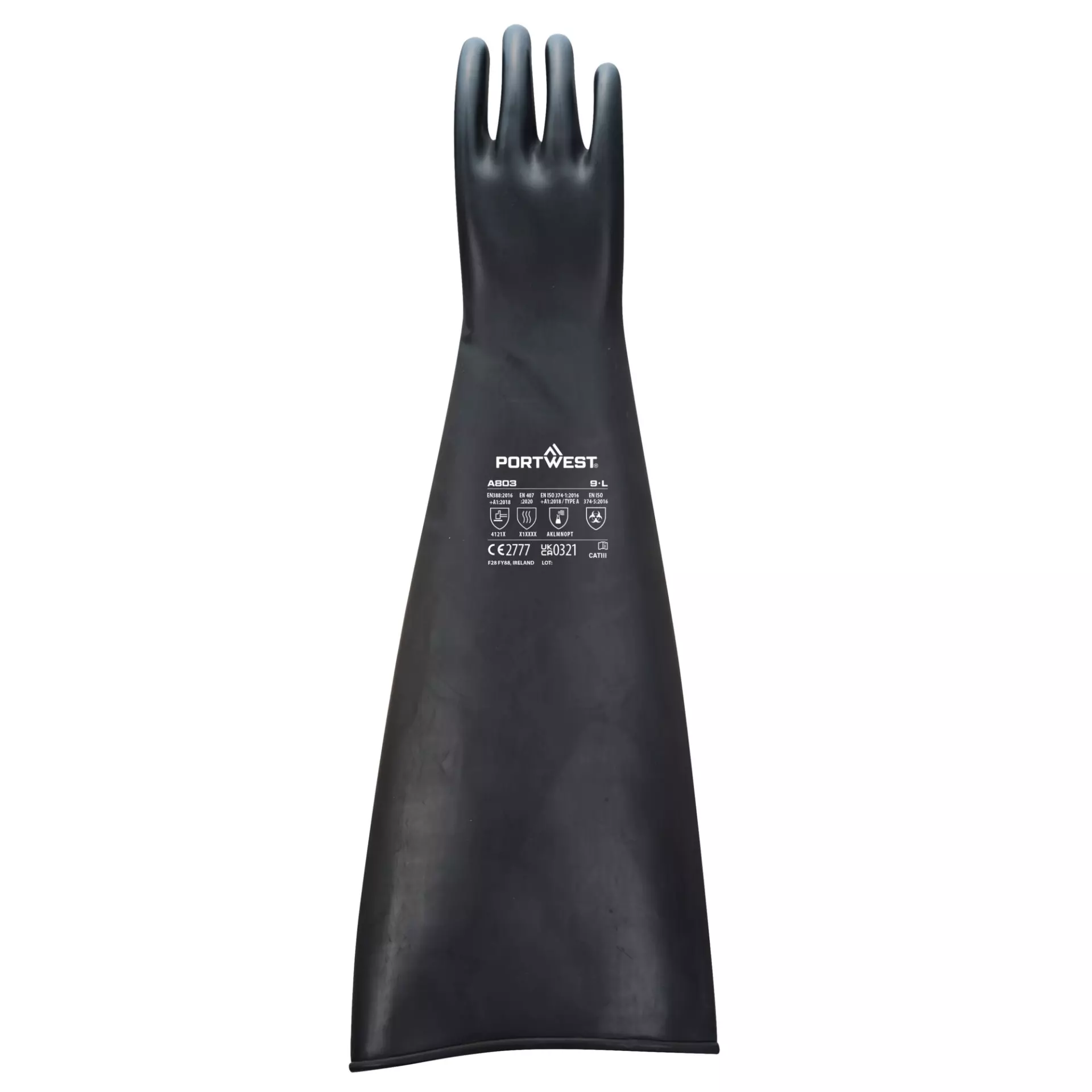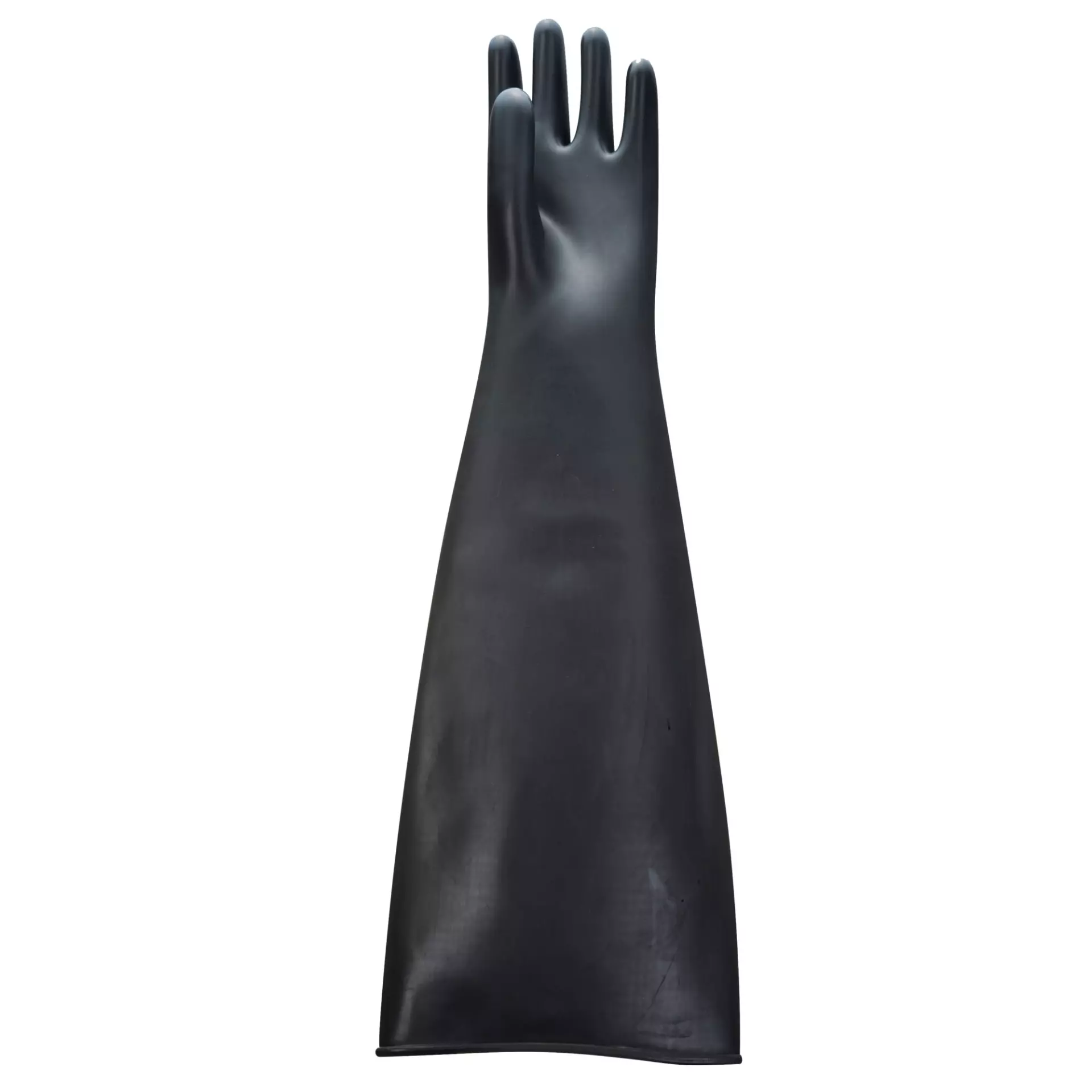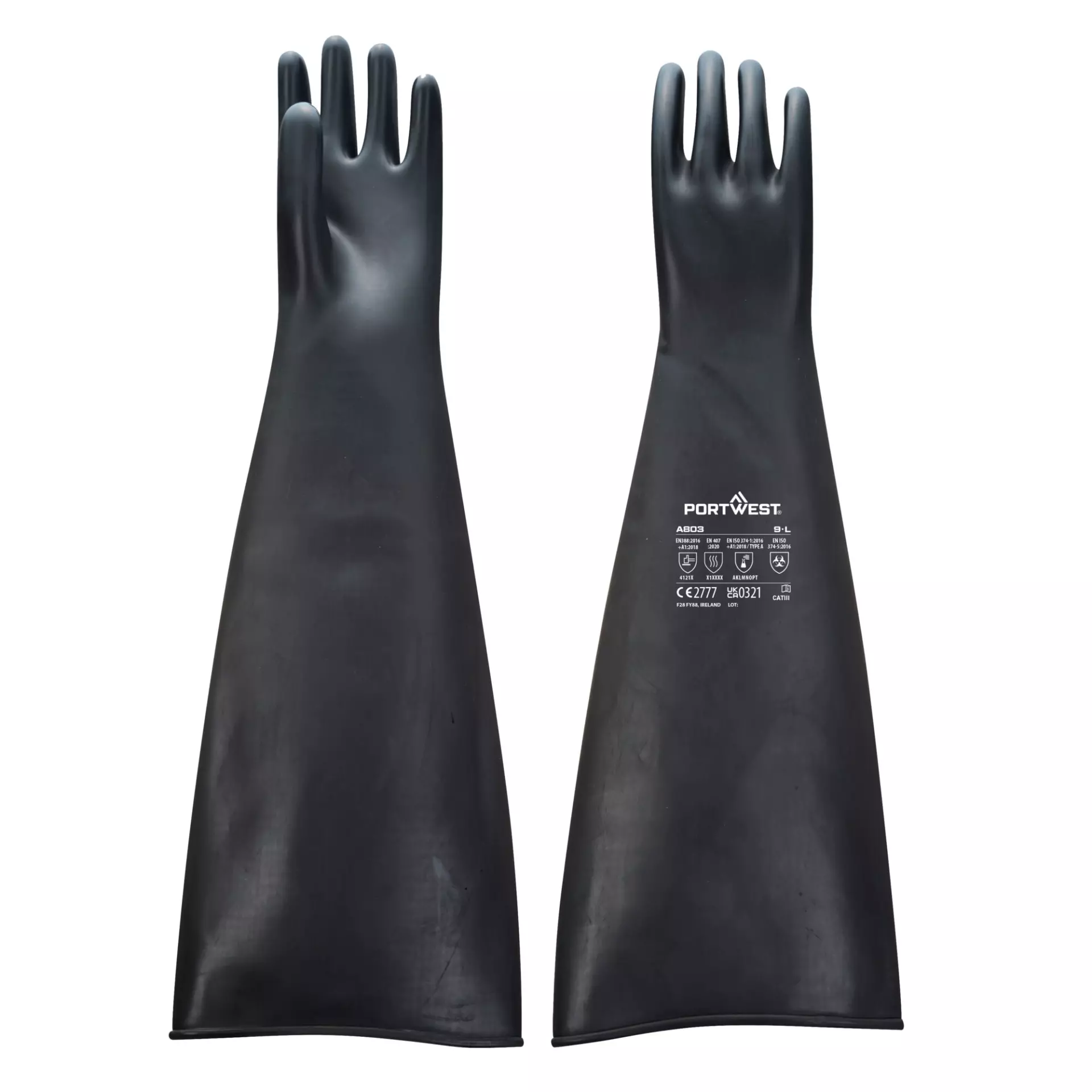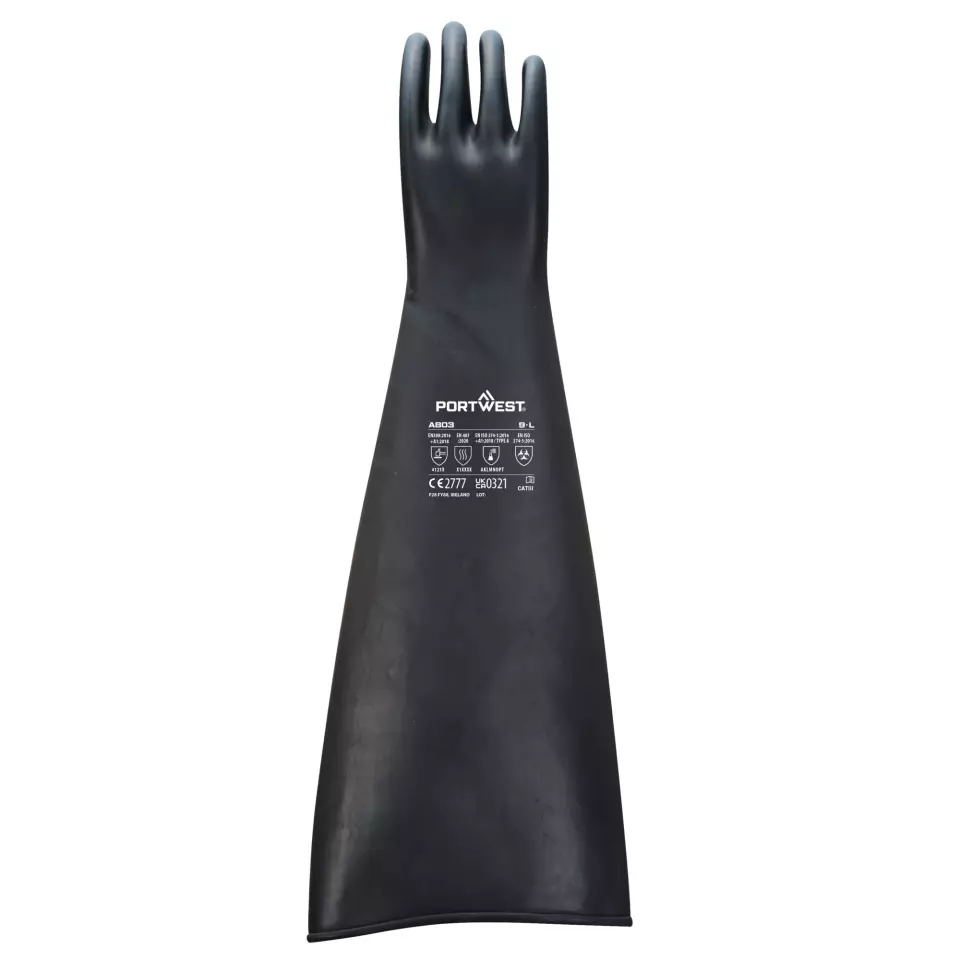


Features You'll Love

Glove Features · Extra Long
EN 388 · Tear Resistance Level 2, Puncture Resistance Level 1, Abrasion Resistance Level 4
EN 407 · Radiant Heat Level 1
Extended cuff provides superior forearm protection from splashes, chemicals, and abrasions, keeping you safer and more confident.
Offers moderate resistance against snagging or catching on rough objects, preventing small rips from growing.
Provides basic protection against punctures from blunt objects like splinters, not sharp points like needles.
Offers the highest level of protection against intense rubbing and wear from rough materials.
Provides basic protection by delaying heat transfer from a radiant source for at least 7 seconds. This makes it suitable for brief exposure to radiant heat, such as when working near ovens or furnaces from a distance.
Portwest
Heavyweight Latex Rubber Gauntlet 600mm, Black, 12 pairs
Heavyweight Latex Rubber Gauntlet 600mm, Black, 12 pairs
(18)
181,80 €
Price per 12 pairs
15,15 € / pair
Choose size
Free delivery
Features You'll Love

Glove Features · Extra Long
EN 388 · Tear Resistance Level 2, Puncture Resistance Level 1, Abrasion Resistance Level 4
EN 407 · Radiant Heat Level 1
Extended cuff provides superior forearm protection from splashes, chemicals, and abrasions, keeping you safer and more confident.
Offers moderate resistance against snagging or catching on rough objects, preventing small rips from growing.
Provides basic protection against punctures from blunt objects like splinters, not sharp points like needles.
Offers the highest level of protection against intense rubbing and wear from rough materials.
Provides basic protection by delaying heat transfer from a radiant source for at least 7 seconds. This makes it suitable for brief exposure to radiant heat, such as when working near ovens or furnaces from a distance.
Product description
The Heavyweight Latex Rubber Gauntlet provides outstanding protection and excellent abrasion resistance for demanding industrial applications. Manufactured from genuine natural rubber with high elasticity, this chemical-resistant gauntlet offers enhanced grip performance in both wet and dry conditions. Available in two configurations with varying thickness and length options, it meets multiple safety standards including Type A chemical protection and microorganism resistance.
Product Features:
- Manufactured from genuine natural rubber
- Chemical resistant construction
- High level of elasticity for enhanced flexibility
- Excellent grip in wet and dry conditions
- Available in 44cm length with 1.1mm thickness or 60cm length with 1.3mm thickness
Technical Details:
- Thickness: 1.3mm
- Length: 600mm
- CE certified
- Certification number: 2777/10661-02/E05-01
- Tested by SATRA Technology Europe Ltd
Recommended Applications:
- Chemical industry
- Cement industry
- Ceramic and tile industries
- Oil industry
- Food industry
Standards:
- EN ISO 21420: 2020
- EN 388: 2016 + A1: 2018 (4121X)
- EN ISO 374-1:2016 + A1:2018 Type A (AKLMNOTP)
- EN ISO 374-5:2016 Micro Organisms
- EN 407: 2020 (X1XXXX)